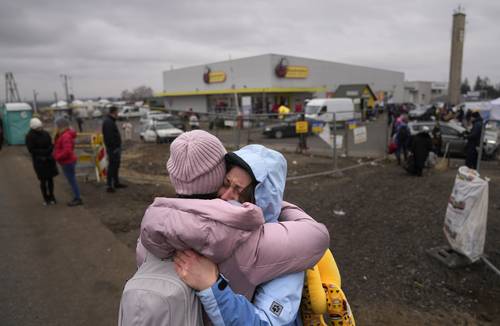After the abrupt fall felt by the Latin American economies Due to the appearance of the covid-19 pandemic, 2021 was, on paper, the year of reactivation and it was. In fact, the Economic Commission for Latin America (ECLAC) estimates that the growth of the gross domestic product (GDP) was 6.23%, driven by consumption, to which exports and gross fixed capital formation were added.
(Financial system, with sufficient solvency and liquidity).
This Friday the data of the (GDP) of Brazil for last year. It was the only data that was missing from the leading economies of the region. Thus, the GDP of the Amazonian giant was 4.6%, a rebound that offsets the 3.9% drop it faced in 2020, the biggest crash in 24 years.
However, between October and December of last year, the Brazilian economy grew only 1.6% compared to the same period in 2020 and 0.5%, compared to the previous quarter, according to data released this Friday by the Institute Brazilian Geography and Statistics (IBGE).
(In January, 18.6% of resources from the General Budget of the Nation were used).
For experts, the behavior of the last three months of 2021 reflects a scenario of low growth and high inflation.
The second largest economy in the region, Mexicoalso rebounded last year towards 5%, something that was insufficient to offset the 8.2% drop in 2020.
On the other hand, Chile, the third largest economy in the region points to a growth of 12% according to forecasts by the central bank of the southern country. This data would be confirmed on the 18th of this month.
(If prices are rising, how to pay basic basket expenses?).
This same week, the highest financial institution in Chile warned that the country’s economy would begin to present “a slowdown” in the first months of this year. The Monthly Indicator of Economic Activity (Imacec), an index that brings together 91% of the goods and services of the gross domestic product (GDP), registered a decrease of 1% month-on-month in the first month of the year.
One of the highest growth of the economies of the region was reported by Peru. The Inca country grew 13.3% in 2021, a variation that compensates for the 11% drop registered in the pandemic, reported the National Institute of Statistics and Informatics (Inei).
This final result was explained by a growth of 3.2% in the last quarter, according to what was indicated by the Inei.
Thus, with this result, Peru is the country with the highest growth in the trade bloc of the Pacific Alliance, ahead of Chile, Colombia and Mexico, in that order.
It is worth remembering that in 2021, Colombia grew 10.6%, after plummeting 7% due to the covid-19 pandemic. This behavior, according to the Dane, was explained, in large part, by the results in the last part of the year, where sectors such as commerce, transportation, accommodation and food services; manufacturing industries, and the public sector, marked the economy.
Other surprises were the upturns in Argentina (10.3%) and Venezuela (4%), the two countries with huge economic crises. Although, the data of the Caribbean country, still needs to be verified.
Also compared to 2020, the economies of countries such as Panama (15.3%) and Uruguay (4.5%) grew. In the case of the former, driven by canal traffic and copper mining, the rebound was not enough to fully recover after the 17.9% drop due to the pandemic.
Now, for the case of Uruguay, the Minister of Economy, referred to the fact that the progress of vaccination and the social contributions of the Government supported this behavior.
WHAT IS PROJECTED FOR 2022
After the records, historical in many cases, of 2021, this year 2022 the countries they should be more cautiousas growth is forecast to slow as booming demand dwindles, global inflationary pressures and, recently, the war between Ukraine and Russia in Eastern Europe.
ROBERTO CASAS LUGO
BRIEFCASE


















